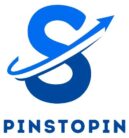The terms “purchase requisition” and “purchase order” are often used interchangeably, but they serve distinct purposes in the purchasing process. Understanding the difference between the two is crucial for maintaining efficiency, accuracy, and compliance in business operations. This is where business process automation tools come into play, offering a streamlined approach to managing these critical steps.
A purchase requisition is an internal document that an employee submits to request the purchase of goods or services. It serves as a formal request for approval before any procurement activity can proceed. On the other hand, a purchase order is an official document issued by the buyer to the supplier, detailing the specifics of the purchase, including quantities, prices, and delivery terms. To delve deeper into the nuances of these two processes, you can explore purchase requisition vs purchase order.
Business process automation tools are designed to simplify and clarify these processes by automating workflows, reducing manual errors, and ensuring compliance with company policies. By integrating these tools into your procurement system, you can seamlessly transition from purchase requisition to purchase order, ensuring that each step is documented, approved, and executed efficiently.
The Role of Automation in Procurement
Automation plays a pivotal role in modern procurement by eliminating redundant tasks and streamlining workflows. With business process automation tools, organizations can automate the creation, approval, and tracking of purchase requisitions and purchase orders. This not only saves time but also reduces the risk of errors that can occur with manual processes.
For instance, when an employee submits a purchase requisition, the system can automatically route it to the appropriate approvers based on predefined rules. Once approved, the tool can generate a purchase order and send it to the supplier without any manual intervention. This ensures that the entire process is transparent, efficient, and compliant with company policies.
Benefits of Automating Purchase Requisitions and Purchase Orders
There are several benefits to automating the purchase requisition and purchase order processes:
- Improved Accuracy: Automation reduces the risk of human error, ensuring that all details are accurately captured and processed.
- Faster Processing: Automated workflows speed up the approval and issuance of purchase orders, reducing delays in procurement.
- Enhanced Compliance: Automation ensures that all transactions adhere to company policies and regulatory requirements.
- Better Visibility: Automated systems provide real-time tracking and reporting, giving stakeholders full visibility into the procurement process.
- Cost Savings: By streamlining processes and reducing errors, automation helps organizations save on operational costs.
Conclusion
In conclusion, understanding the distinction between purchase requisitions and purchase orders is essential for effective procurement management. Business process automation tools offer a powerful solution to streamline these processes, ensuring accuracy, efficiency, and compliance. By leveraging these tools, organizations can enhance their procurement operations, reduce costs, and improve overall productivity. To learn more about how automation can transform your procurement processes, consider exploring the advanced features of business process automation tools.

